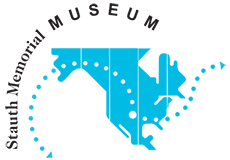
- This event has passed.
Wandering Spirit: African Wax Prints

Wandering Spirit: African Wax Prints
On Display October 22nd, 2019 – November 30th, 2019
Batik is a Javanese word that refers to a traditional technique of wax-resist dyeing, in which a pattern is made on both sides of cotton fabric with warm liquid wax applied by a tjanting, a small brass cup with a spout. After the wax cools and solidifies, the cloth is dyed with a primary color and the wax is then removed, revealing the pattern where the wax had once been.



J.B.T. Prévinaire, a Dutch cotton printing mill owner, was instrumental in developing a machine that could print imitation batiks industrially. In 1854, he unveiled “La Javanaise,” a converted French printing machine that could print an imitation of the Javanese batik using resin instead of wax.
Despite the technological advance, “La Javanaise” produced imperfections in the print that did not appeal to the Javanese buying public, so the European printers found themselves looking for new markets around the world. After many years of transcontinental exploratory travels and investigations, they identified Africa as the new potential market for their wax prints.
The success of the wax prints on the African scene is driven by many factors, such as the culture, taste, and desires of the African consumers. Clothing in Africa serves an important means of communication, sending secret messages and retelling local proverbs. Clothing also depicts a person’s social status and position, political convictions, ambition, marital status, ethnicity, age, sex, and group affiliations. The names and stories associated with the fabrics differ from country to country and region to region. One fabric may have different names in different countries, depending on the symbolism that the consumer can read in the fabric.
The history of the African wax print is a history paved along colonial trade routes and globalization in the post-colonial era. Though not originally African, these textiles have become ingrained in African culture and society, and loved and identified as their own. A program of ExhibitsUSA, a national division of Mid-America Arts Alliance with The Kansas Arts Commission and the National Endowment for the Arts.



This exhibit will also feature quilts and textile art from local Kansans. If you are interested in having your quilt or artwork displayed with this exhibit, review the guidelines and find the entry form here.
This exhibit is partially funded at the Stauth Museum by a grant from The Arthur and Cornelia Scroggins Foundation Fund at the Community Foundation of Southwest Kansas.


You must be logged in to post a comment.